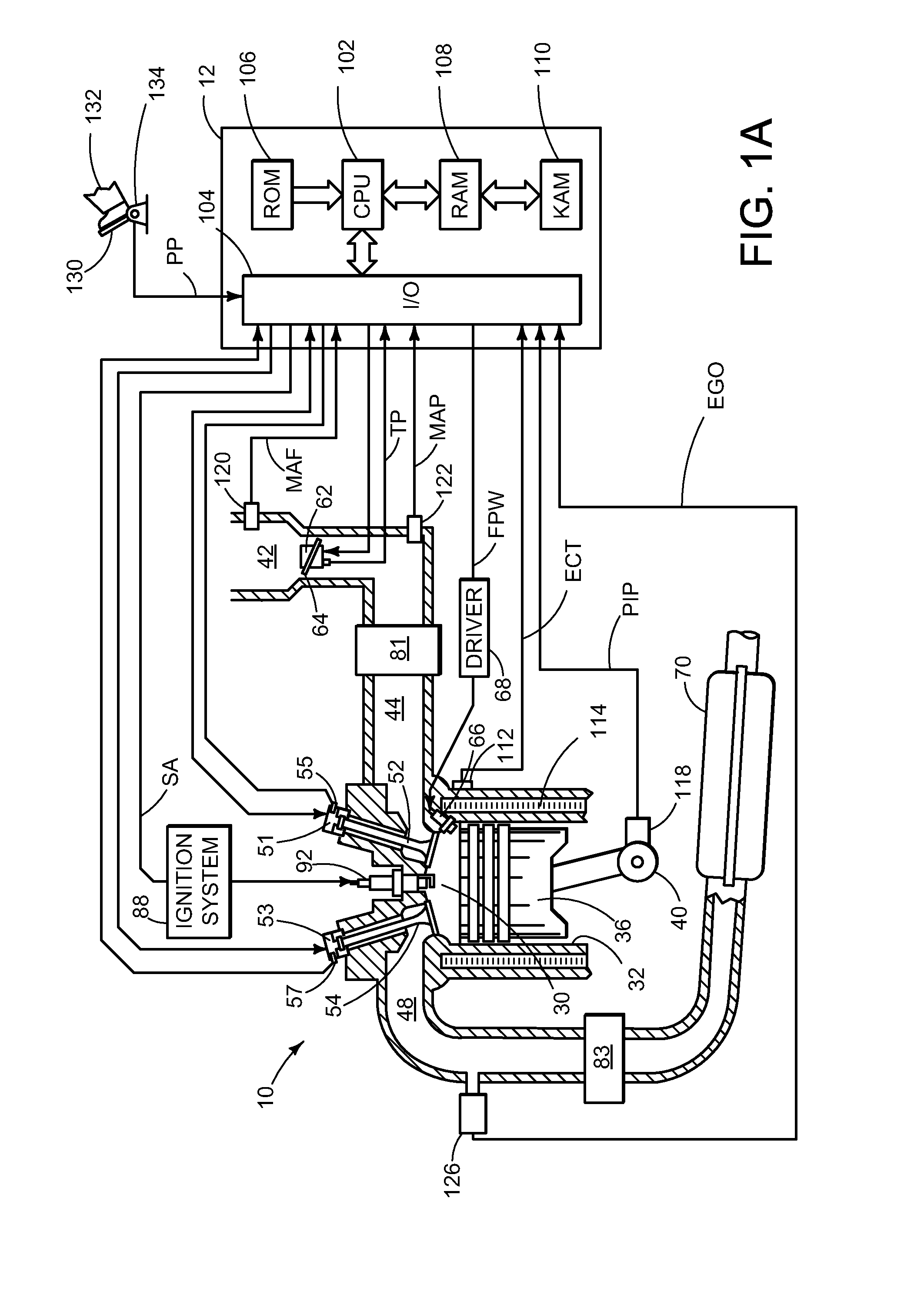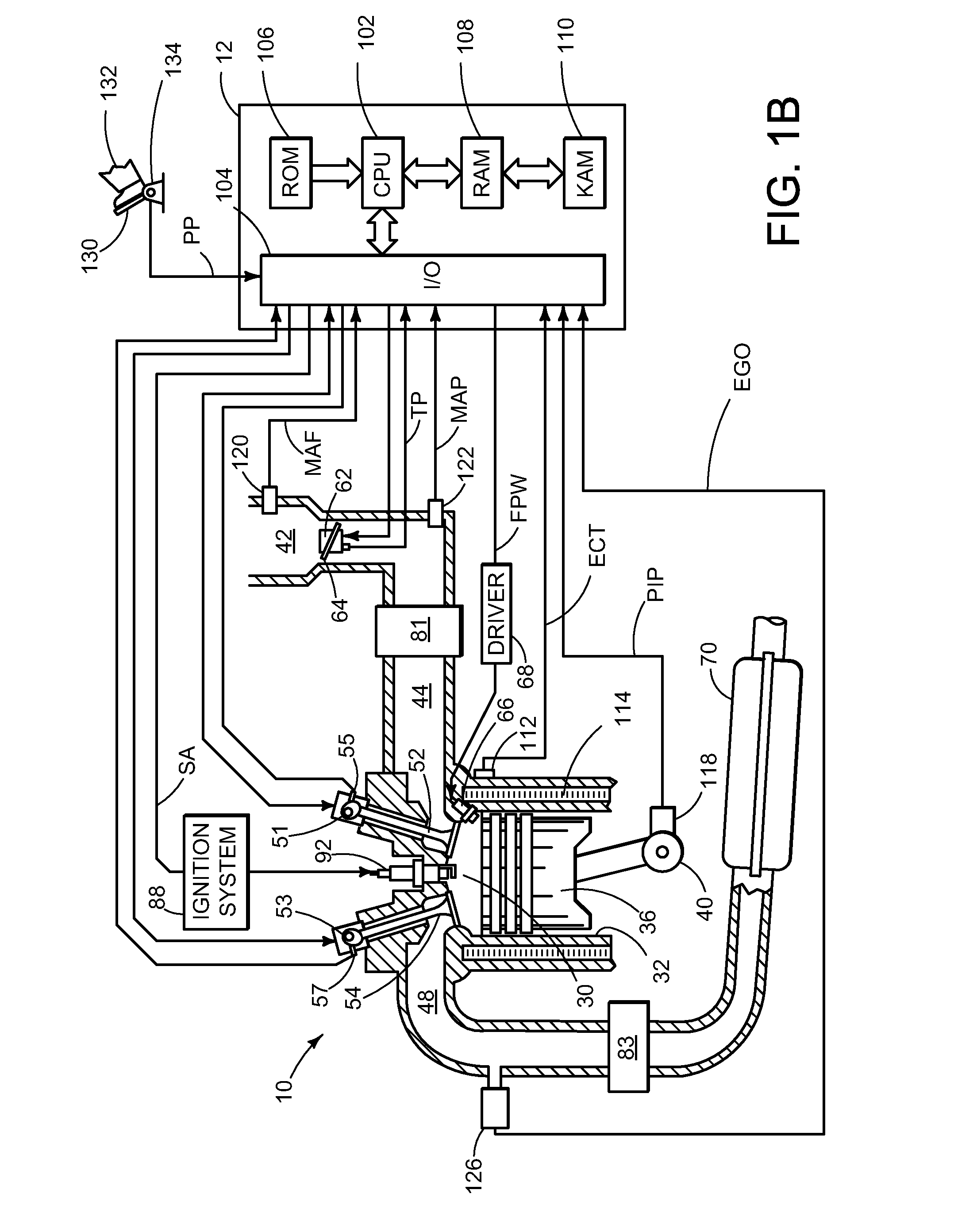Differential torque operation for internal combustion engine
a technology of internal combustion engine and torque, which is applied in the direction of electrical control, process and machine control, instruments, etc., can solve the problems of increasing noise and vibration harshness (nvh), reducing vibration at the cost of reducing fuel efficiency, and increasing torque differential
- Summary
- Abstract
- Description
- Claims
- Application Information
AI Technical Summary
Benefits of technology
Problems solved by technology
Method used
Image
Examples
Embodiment Construction
[0019]An approach for varying a torque differential between at least two groups of cylinders of an internal combustion engine in response to at least an operating condition of the engine will be described herein in greater detail. Referring now to FIGS. 1 and 2, various engine configurations will be described, which may be used with the various control strategies described herein. In particular, FIGS. 1A, 1B, and 1C illustrate example cylinders of a multi-cylinder internal combustion engine while FIG. 1D illustrates an example engine including a boosting device. FIGS. 2A, 2B, and 2C illustrate example engines having multiple cylinders.
[0020]Engine 10, which may be represented by the various engine configurations illustrated by FIGS. 1 and 2, among others, may be controlled at least partially by a control system including at least a controller 12. An example cylinder or combustion chamber 30 of engine 10 may include combustion chamber walls 32 with moveable piston 36 positioned there...
PUM
 Login to View More
Login to View More Abstract
Description
Claims
Application Information
 Login to View More
Login to View More - R&D
- Intellectual Property
- Life Sciences
- Materials
- Tech Scout
- Unparalleled Data Quality
- Higher Quality Content
- 60% Fewer Hallucinations
Browse by: Latest US Patents, China's latest patents, Technical Efficacy Thesaurus, Application Domain, Technology Topic, Popular Technical Reports.
© 2025 PatSnap. All rights reserved.Legal|Privacy policy|Modern Slavery Act Transparency Statement|Sitemap|About US| Contact US: help@patsnap.com



